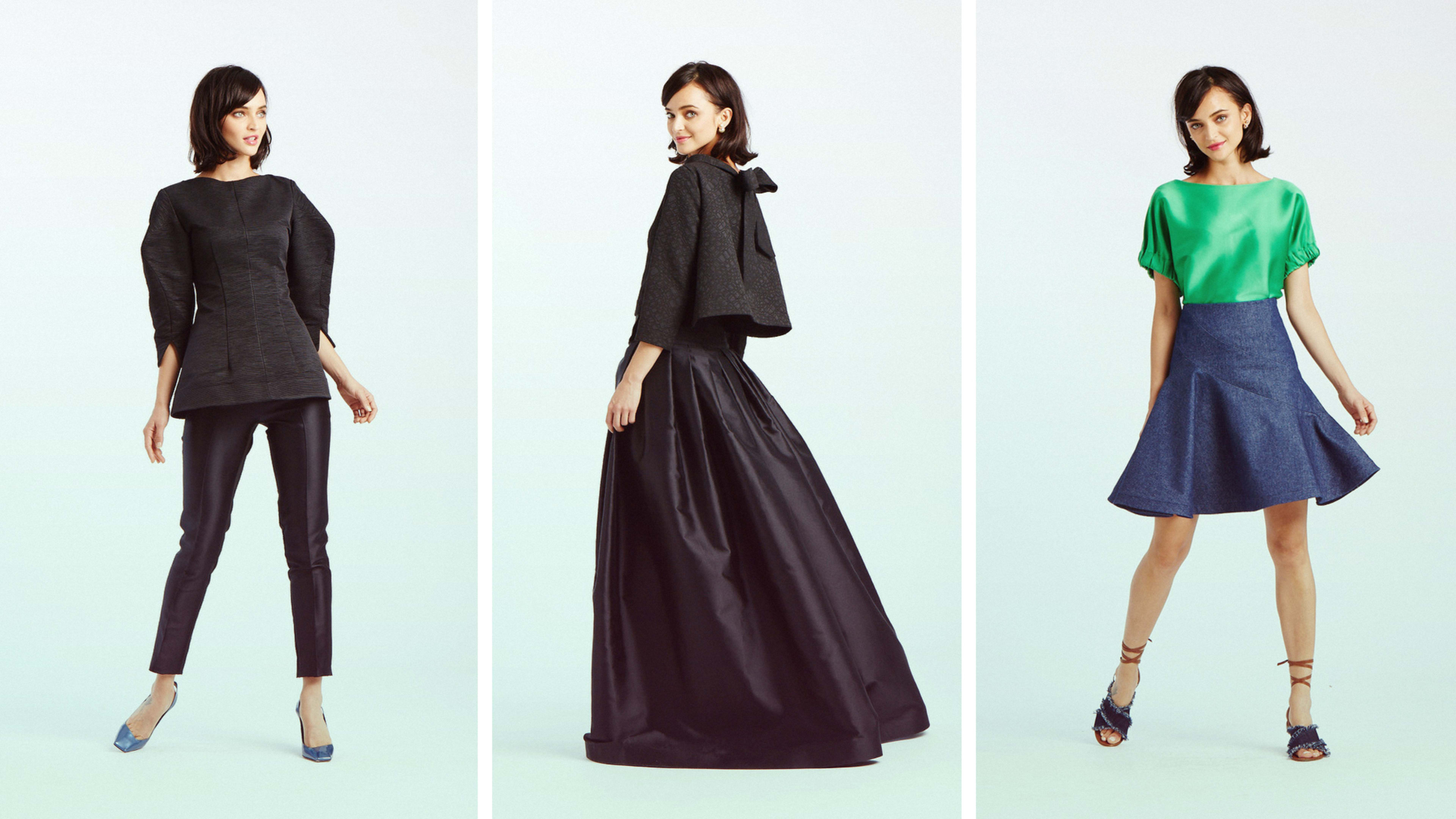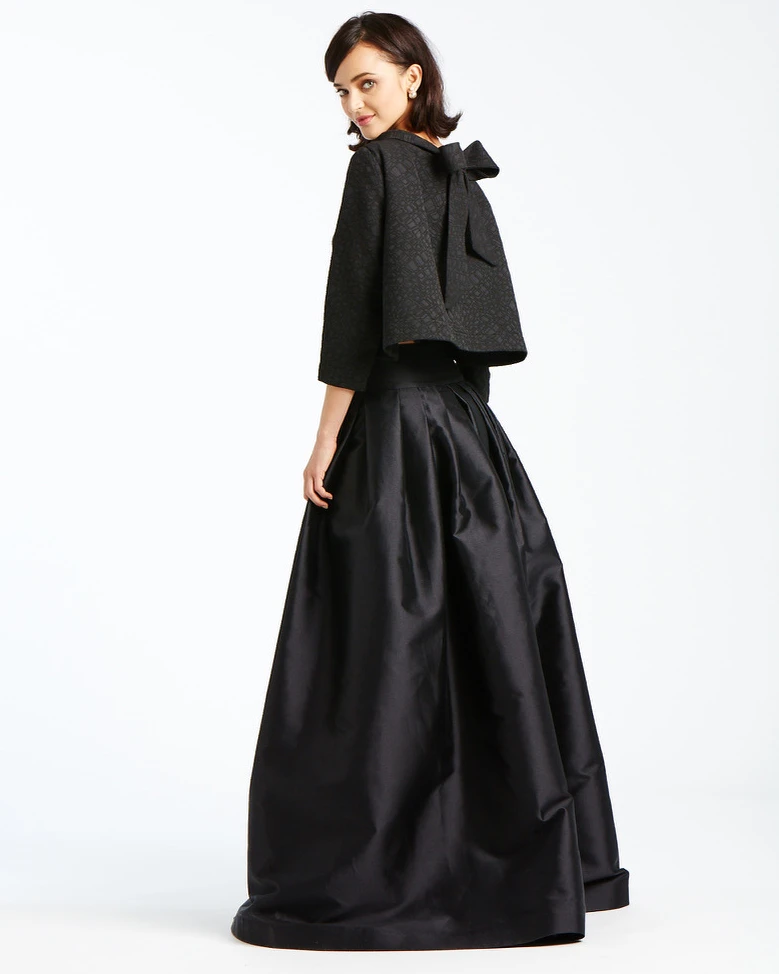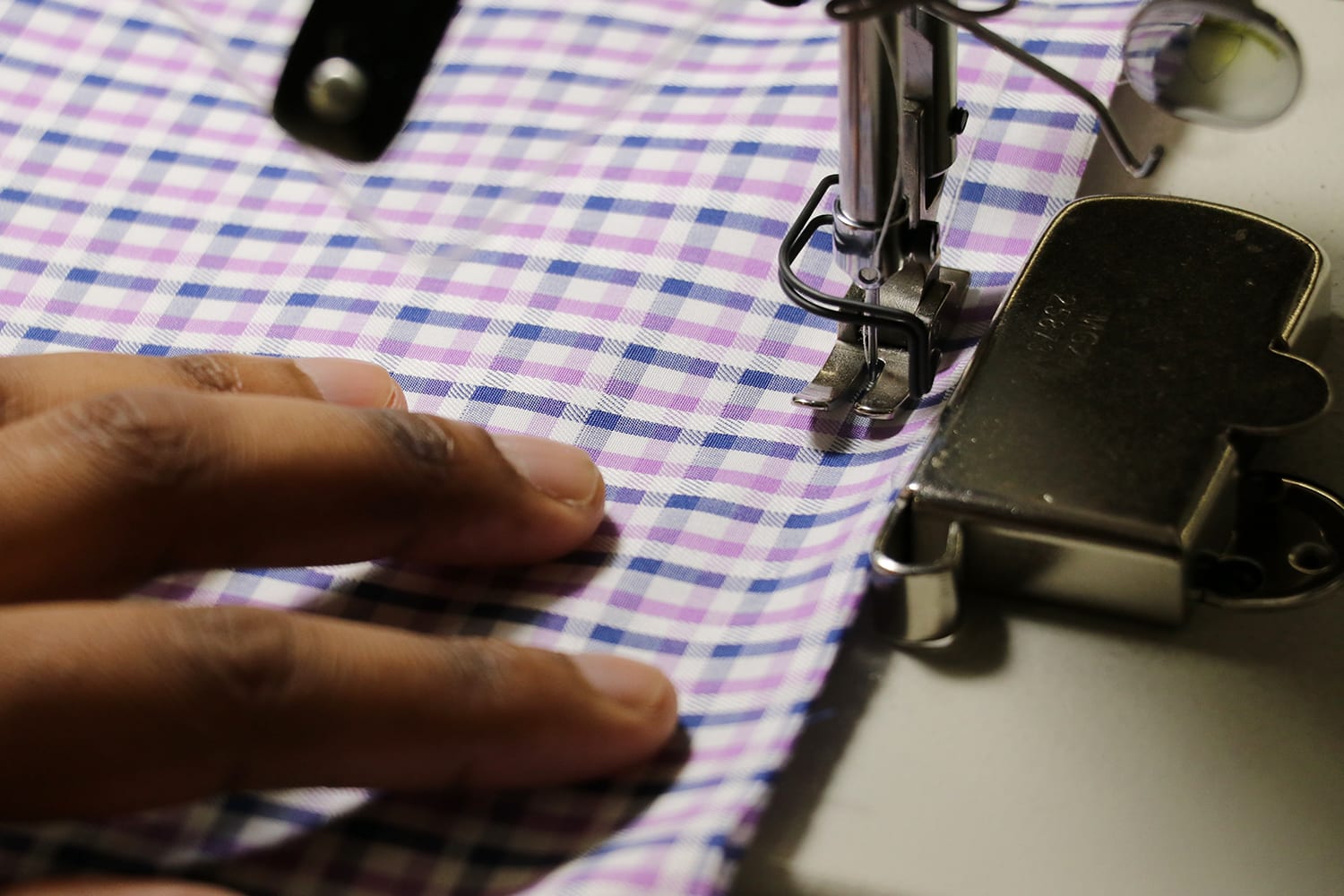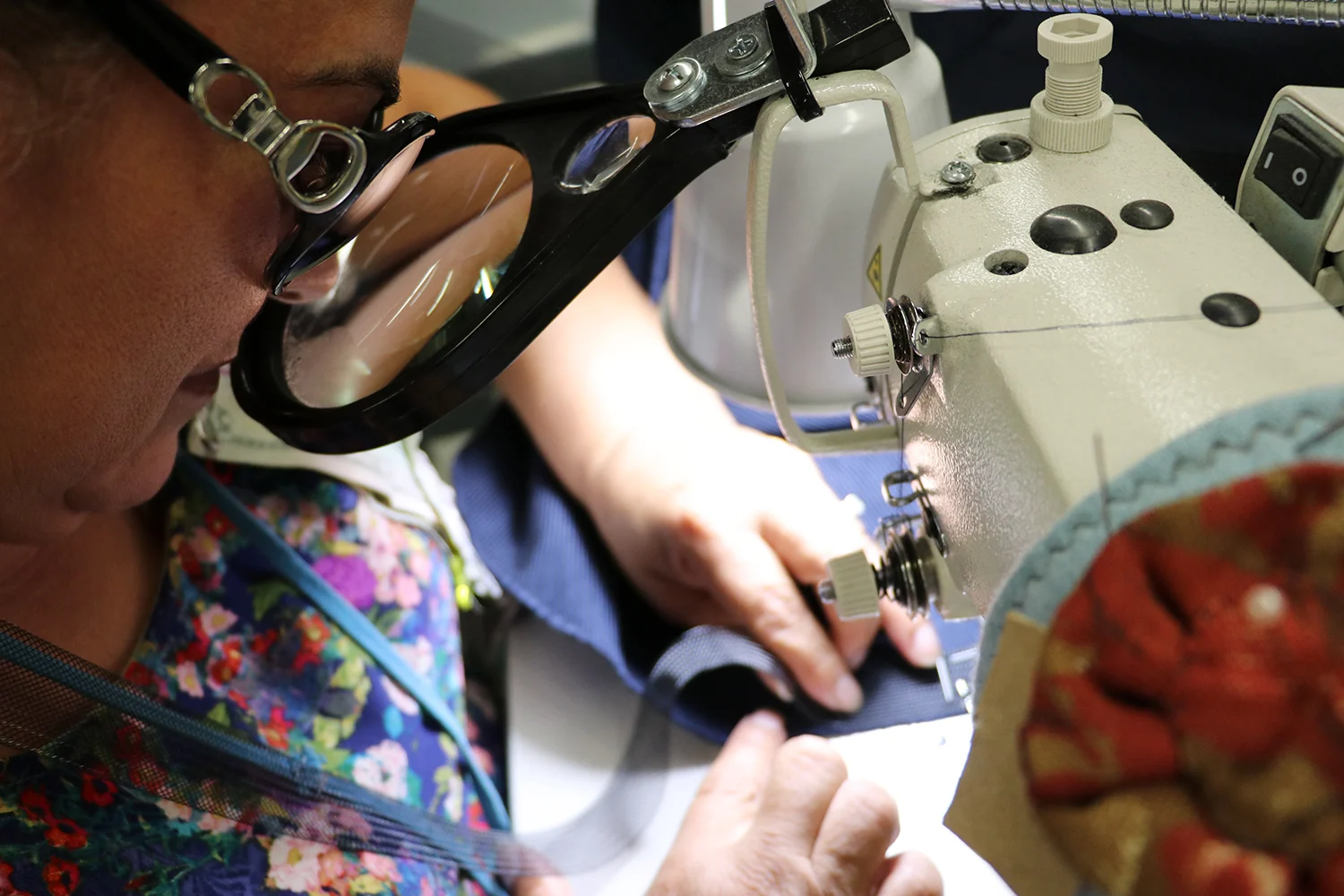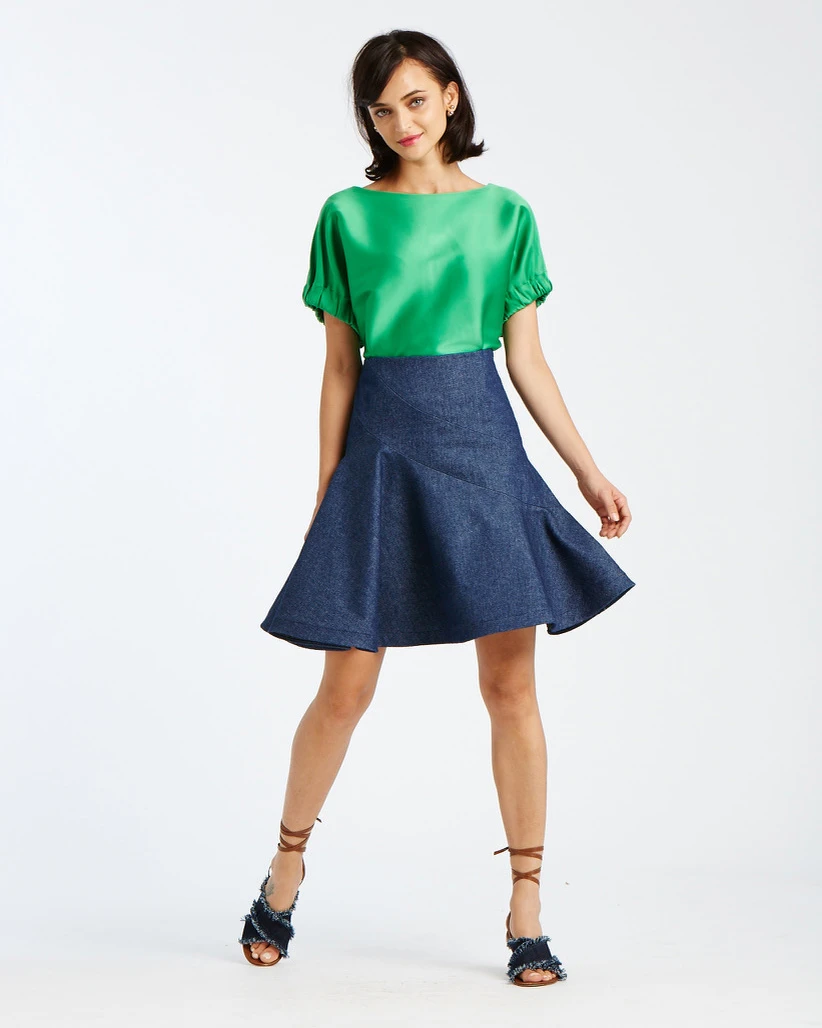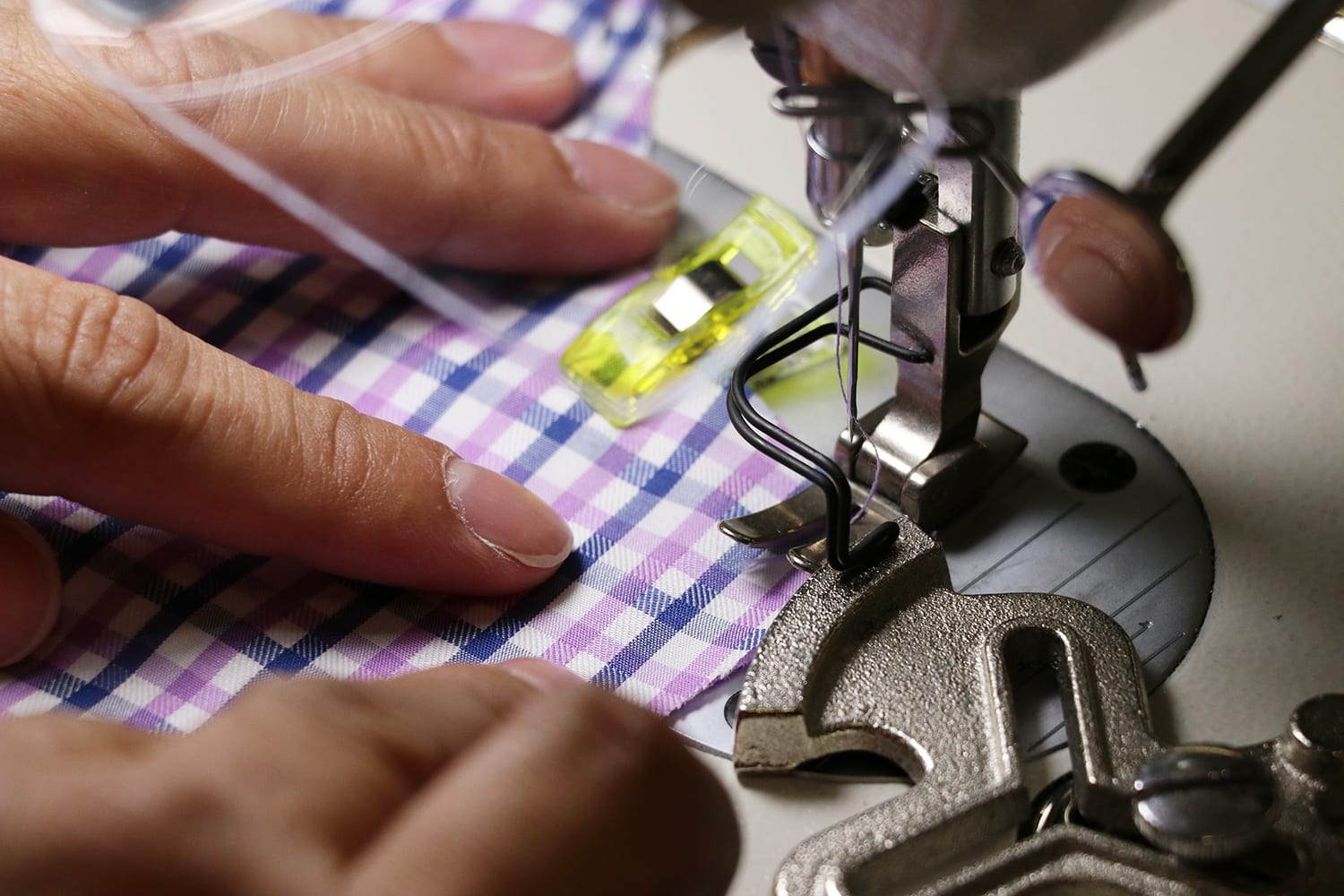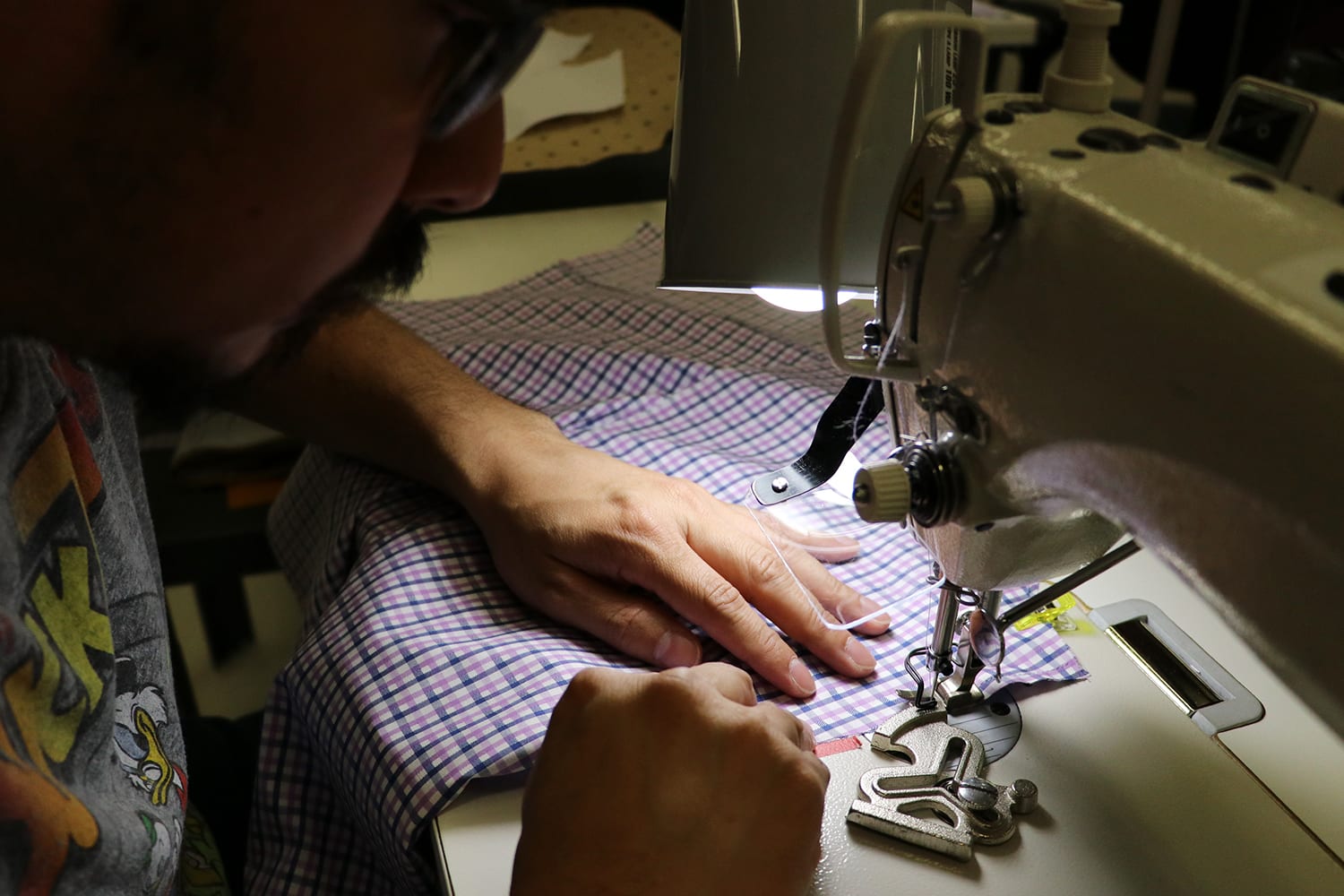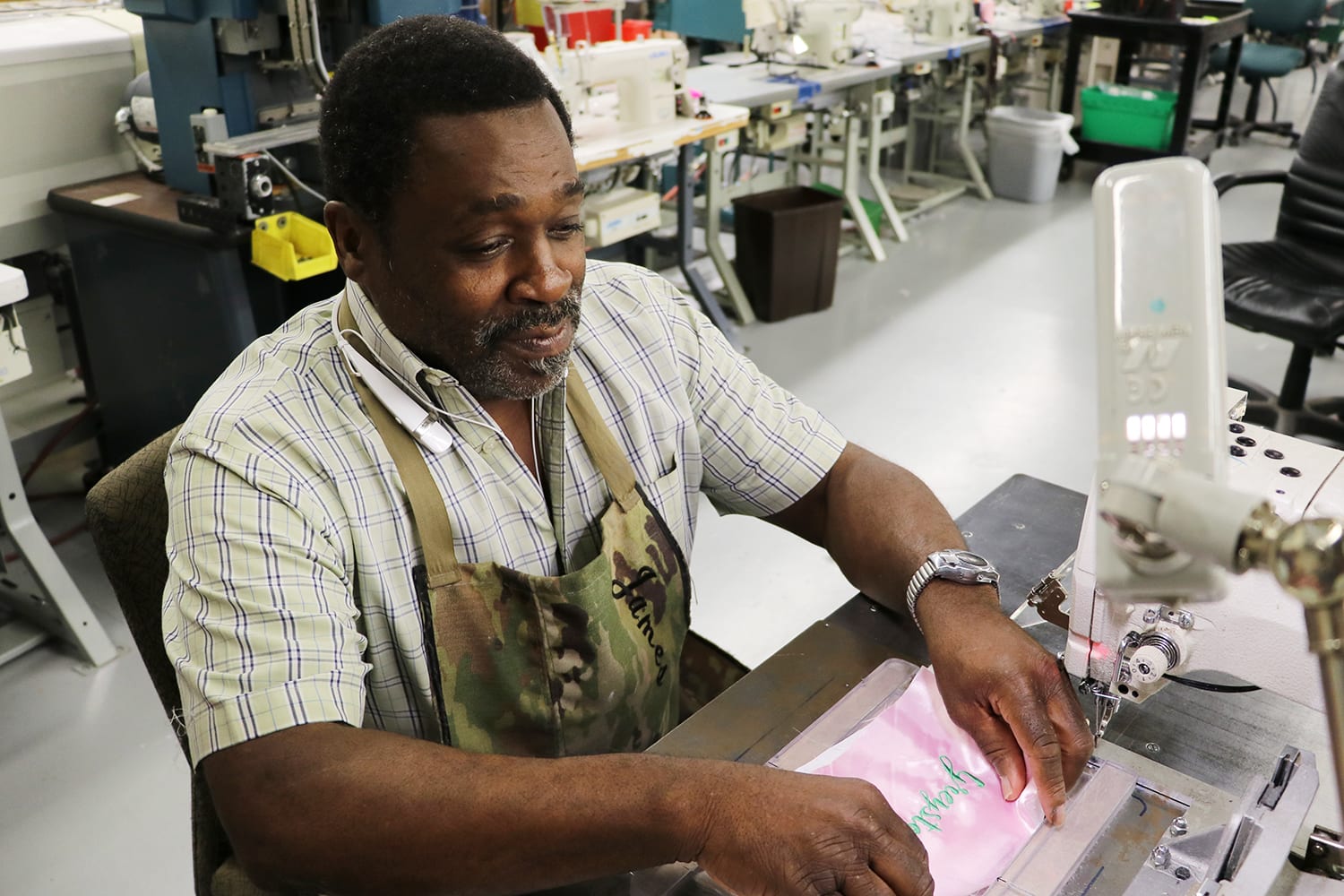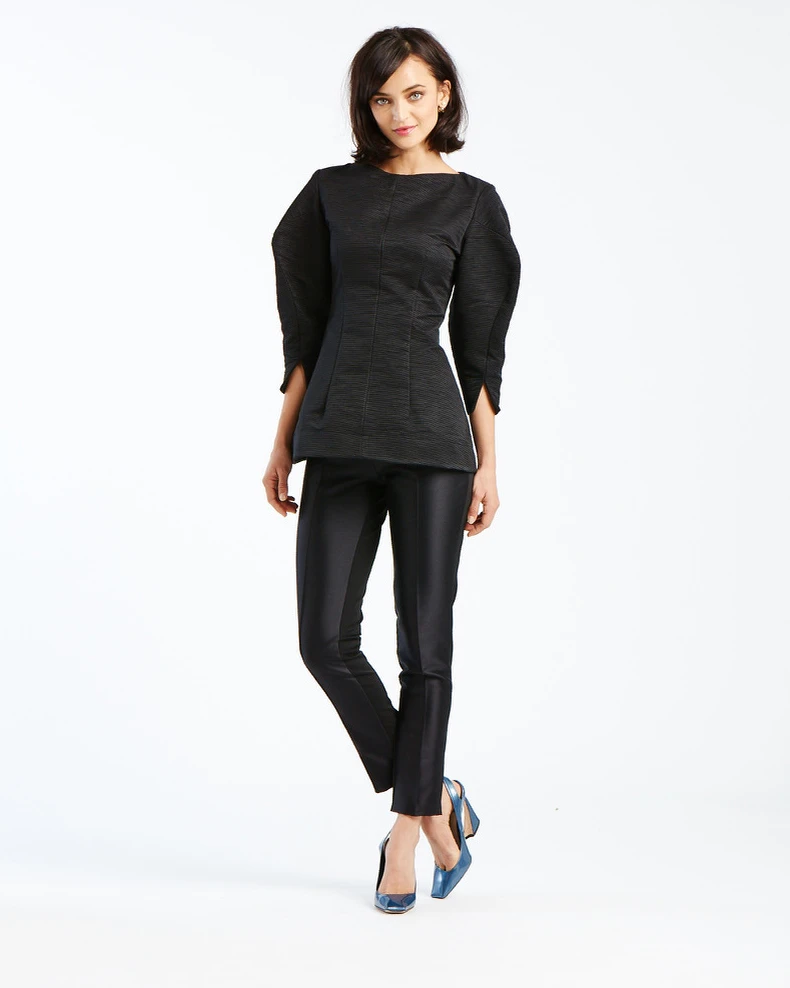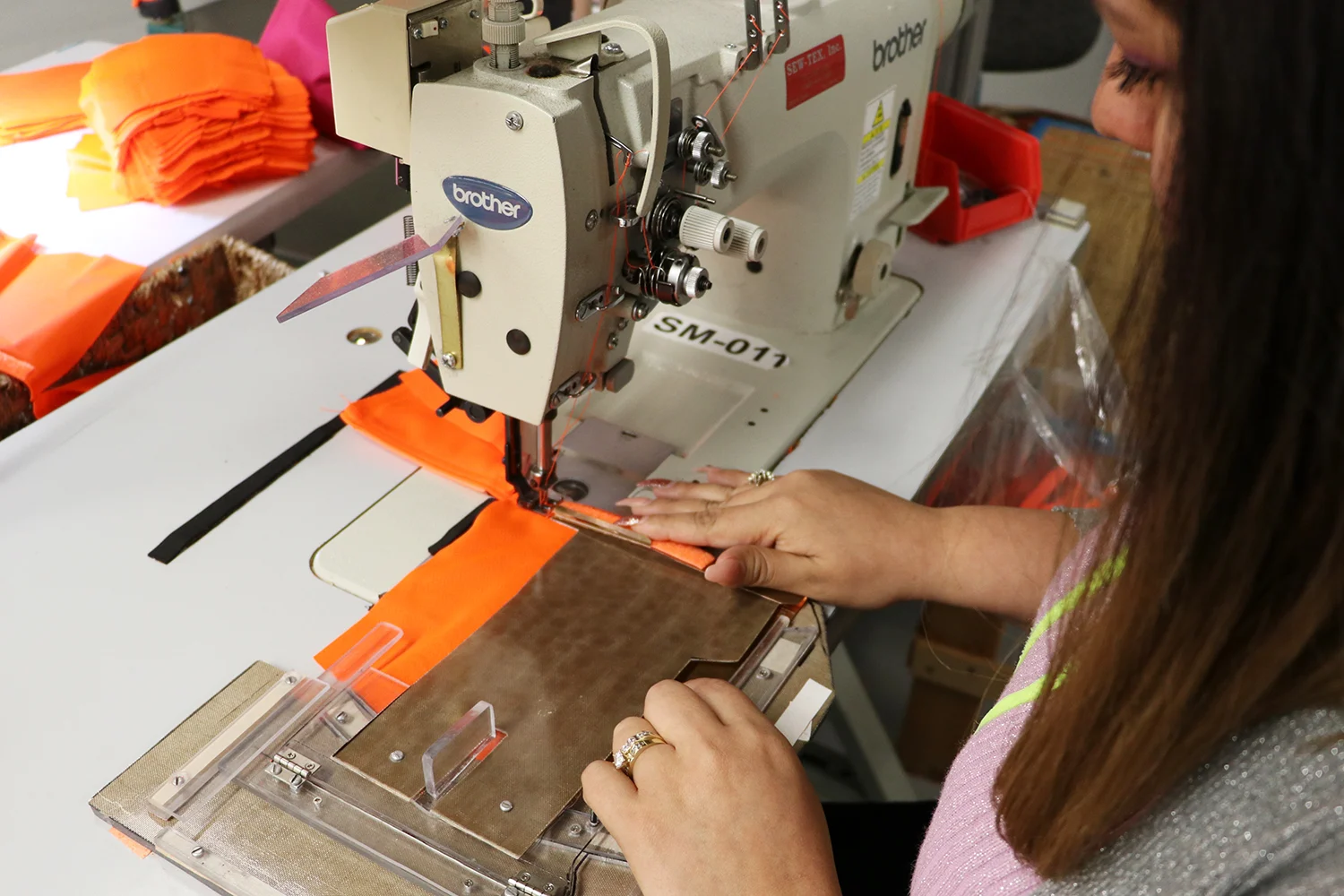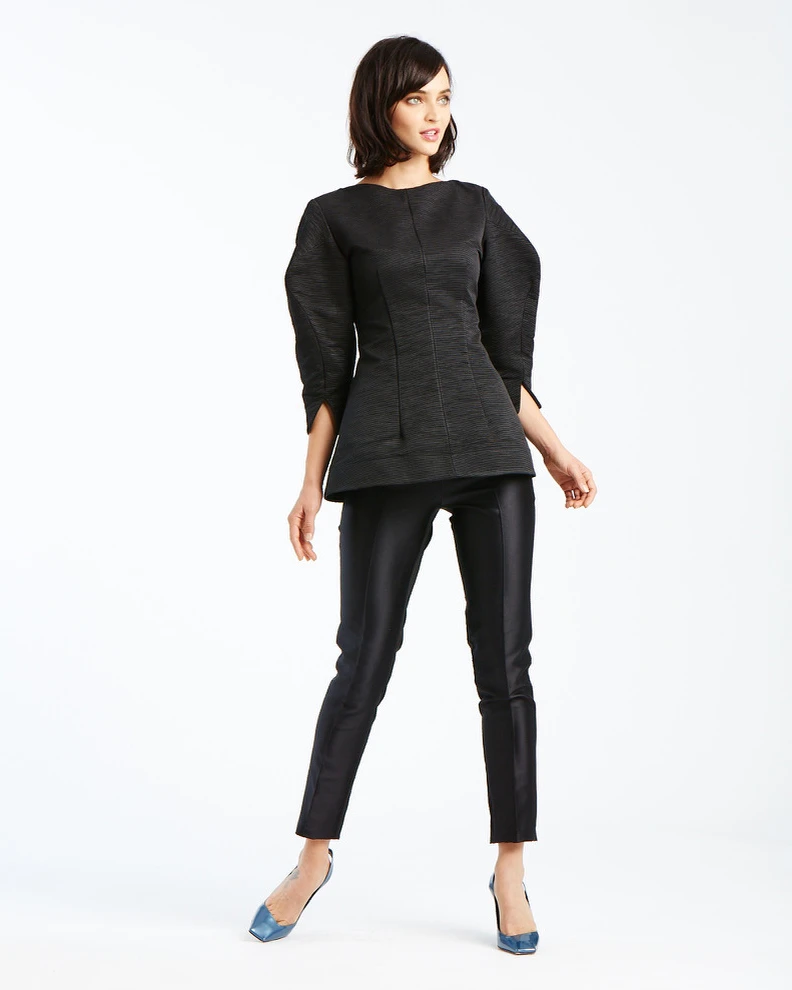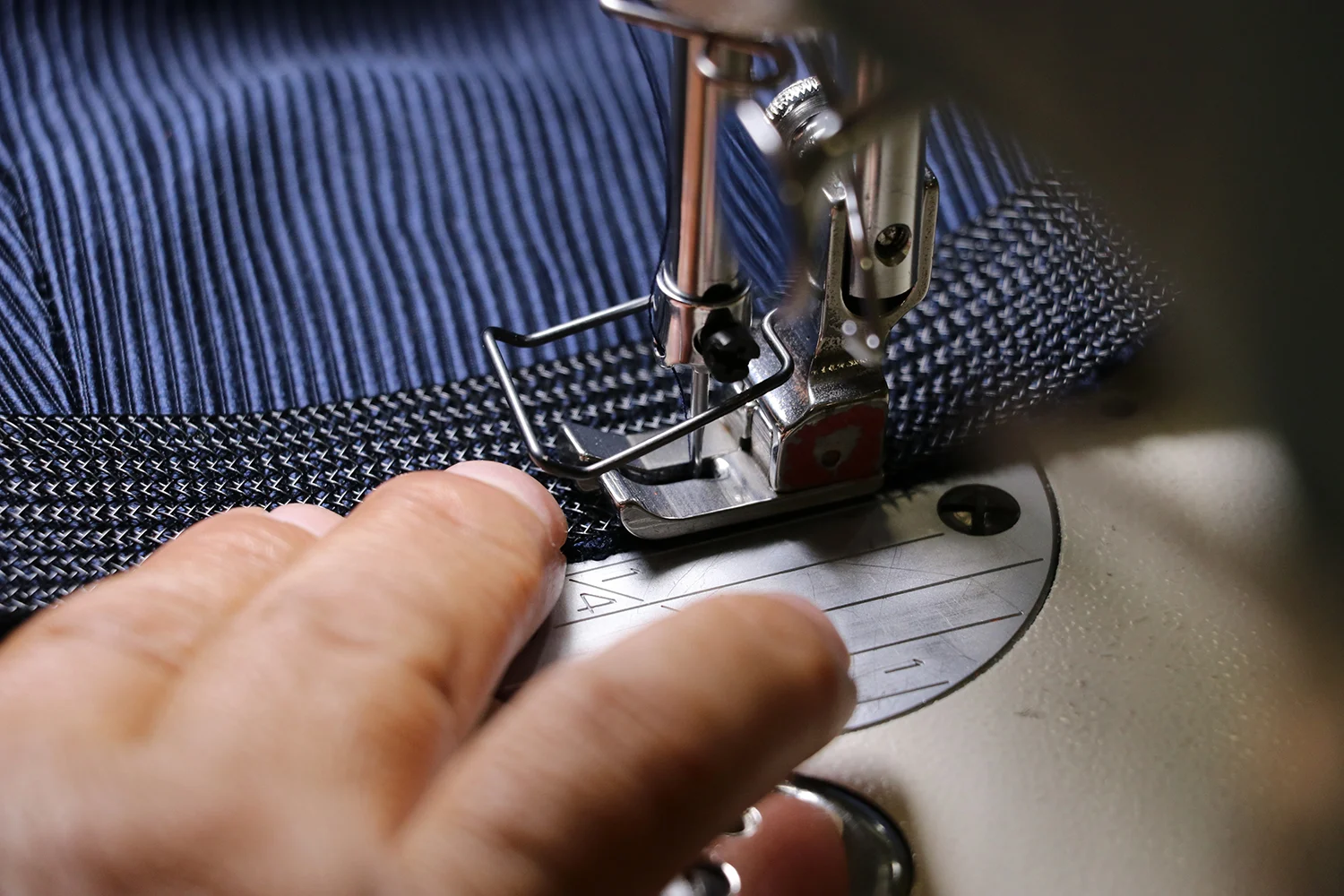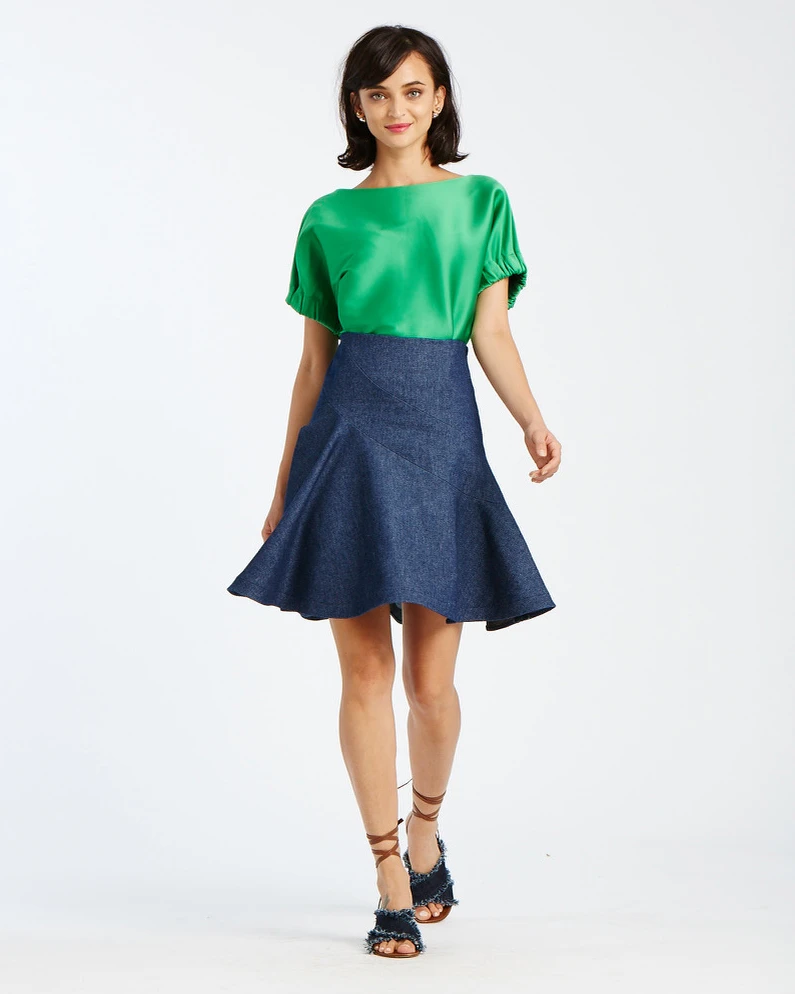Elaina Tillinghast, a 54-year-old seamstress, spends her days in a Dallas clothing factory sewing blouses and gowns for Tish Cox, an up-and-coming American designer who counts Zac Posen and André Leon Talley among her fans. The clothes are made from luxurious, brightly colored silks and are full of unexpected flourishes, like billowy sleeves and ruffles. Tillinghast’s sense of the Cox aesthetic comes entirely through touch: She’s been blind since birth.
When Tillinghast was a child, her parents worried whether she would be able to make her own way in the world when she grew up.
“Mother thought it was her duty to make sure that I could fend for myself should I ever need to,” she tells me. “She taught me sewing, cooking, budgeting, and nearly everything else she could think of.”
Related: Zac Posen Is Ready for His Close-Up
Tillinghast emerged a woman with the determination to live life to the fullest. And she has. After getting a degree in computer science, she worked in the call centers of telecom and internet service provider companies. She then had a stint as a massage therapist, helping people with serious physical ailments.
Eight years ago, she landed at the Dallas Lighthouse for the Blind, an 85-year-old nonprofit devoted to training the visually impaired and getting them jobs. Its cavernous North Texas facility is a hive of activity, where blind workers keep busy labeling, welding, filling bottles with liquid, and answering customer service questions on the phone, among other things.
“With the right amount of education, training, and assistive technology, a blind person can do just about anything a sighted person can,” Lighthouse CEO Hugh McElroy says. “Once you wrap your head around that, things suddenly become possible.”
Of the 7 million Americans that are blind, 30% live below the poverty line, largely because they struggle to find jobs. Most blind people don’t know what they are capable of, so the organization does a lot of outreach, trying to connect them with opportunities to earn money. In the sewing department, workers make between $9 and $20 an hour.
At the Lighthouse, Tillinghast’s creative juices flowed when given a chance to do the detailed stitching for the Tish Cox collection. “It requires a little more mental work,” she says. “You’re not doing the same thing for the next three hours.”
Tillinghast is intimately familiar with each design. Before she starts on a new style, she feels it out with her hands. Then she strategizes about all the steps it will take to create it. “You have to juggle shapes in your mind,” she says. “You work in stages, turning sections inside out to sew, leaving spots open so you can sew them up later. It’s jigsaw puzzle work.”
Tillinghast uses her fingers to measure exactly how wide a hem might need to be: Does it need to be a quarter or half of a finger nail wide? It has taken years for her to fine-tune these skills, starting from her childhood when her mother taught her how to sew by hand. Over time, however, sewing has become second nature.
Tish Cox started working with the Lighthouse a year ago. She was looking for a new factory so she could expand her production. After seven years of growing her business in Texas and building a strong following in the South, she decided it was time to expand nationally. She wanted to keep all her production in Dallas to stay on top of the manufacturing. Her husband encouraged her to check out Lighthouse.
The idea of a blind dressmaker seemed like an impossible concept. Sight seemed crucial to the process of sewing clothing, especially complicated designer pieces that sell for $500 or more. But Cox saw the light—so to speak—when she visited Lighthouse’s facility.
“As you walk into this automation area with all of these crazy sewing machines, you think, surely most of these workers can see,” Cox says. “Then you quickly realize that most of them can’t.”
It was an elaborate military belt created for soldiers to carry around tools on projects that convinced Tish Cox to make her clothes at the Lighthouse. “Every single piece was perfect,” she says. “The belts had a lot of parts to them and involved a lot of detail, but they were sewed perfectly.”
Cox asked McElroy if the Lighthouse was equipped to sew designer fashion garments. He noted that they had never attempted anything like that. “But just because it’s never been done before doesn’t mean we can’t do it,” McElroy tells me. “Let’s just sit down and figure it out.”
He brought on a team of experts and designers who were able to figure out how blind people could sew these garments. He also brought in a team of sighted employees who work alongside the blind, doing tasks that require vision. Then, they were off and sewing.
Cox was surprised by how quickly the Lighthouse could start the project. “In six days, the Dallas Lighthouse figured out how to source the fabrics and make 4,000 pieces for me,” she explains. “The beauty of this is that if I need to scale up production, the Lighthouse will be able to accommodate me.”
McElroy purchased sewing machines for the Lighthouse and brought in engineers who know how to adapt equipment for the blind and visually impaired. Safety, he says, is key. There are several guards in place to protect the sewers’ fingers from the needles. There are other adaptations that are specific to sewing Tish Cox garments: Markers help the user gauge distances and know which part they are working on. Employees go through extensive training before they start working on the machines.
“It’s not uncommon to go years without even a small injury,” McElroy says. “Once a person has gotten these skills down, we begin to find ways to improve on the process to make it quicker and more efficient.”
Tillinghast was there from day one. After a three-month course sponsored by the Lighthouse, her days have been filled with making Tish Cox dresses. Right at the start, there were hiccups, as the team struggled to understand how to use the brand-new technology. But after a few weeks, they were churning out beautifully crafted, impeccable garments that would appear in high-end stores and be worn by women attending fancy events.
Tillinghast feels some ownership over the final product. “Tish Cox does not do things that look like they’re off the rack,” she says. “She tries for a more open and freeing shape to her garments.”
For Cox, it was vitally important for her clothes to be well-made. The first surprise, when working with the Lighthouse, was seeing how impeccable the craftsmanship of the products was. But the second surprise was seeing how content the workers at the factory appear to be whenever she’s stopping by for a visit.
“Walking through the Lighthouse is a really moving experience,” Cox says. “These are Americans who want to work, have a real career, and be able to grow. It is the happiest workplace I’ve ever been to in my life.”
Recognize your brand’s excellence by applying to this year’s Brands That Matter Awards before the early-rate deadline, May 3.
